Futures Game
New York City and I have a love/hate relationship. I love how much awesome stuff goes on there, and I hate how difficult it is to feel a part of it. I love Broadway, and I love that I could walk through a relatively quiet neighborhood in Queens at midnight, and pass about fifteen restaurants that were still open. I love that celebrities roam the streets as though they were real people.*
I hate how selfish people are. I don’t think it’s rudeness. It’s not that they don’t care about you, or wish bad things on you; it’s just that their society is built on a one-to-one caring system. The idea is that if everyone makes sure that they take care of themselves, then everyone gets taken care of. No muss, no fuss. The southern hospitality mindset is that if everyone takes care of everyone else, then someone else will take care of you. Admittedly, it sounds unnecessarily complicated, but it creates people who are inherently generous and aren’t automatically suspicious of their surroundings, so I like it anyway. However, if you have the southern mindset in New York, you get eaten alive. You wind up getting stuck holding a door open for hours. Your turn signal is the equivalent of a limping antelope to a pride of lions. When I visit New York, my hospitality generally gets taken advantage of once or twice, then I get really angry, then I make a conscious effort to adopt the New York attitude, then I fit in just fine. The adjustment period always takes about a day.**
I also hate driving in New York, but not for the reason most people hate it. I don’t mind the traffic, and I don’t mind the aggression that much. I just hate missing stuff. When I was little, I used to hate naps and baths with a passion because they were wasted opportunities to do or see something interesting. Now that I’m an adult, I appreciate the value of rest and cleanliness a little bit more, but I still hate missing stuff. Driving in New York requires your full attention, but everywhere you drive there are famous people, movie sets, historic neighborhoods, and cool events that couldn’t happen anywhere else. I was in Manhattan for all of ten minutes last night, and I barely noticed Little Italy as I went by. Who knows what else was going on that I didn’t even realize I was missing.
The Futures Game was similarly overwhelming, which makes sense because it was being hosted by the Mets. As someone who has taken a crash course in prospect watching over the past month, I was blown away by the level of talent (and expectations) that converged yesterday. I added eleven prospects to my list in one game, which isn’t counting the people who I’d already seen, or the people who were on the roster, but didn’t actually get in the game. It was a scout’s dream, except for the fact that no pitcher threw more than an inning or so, and most position players only really played about half of the game. Still, I’m counting it, and I’m counting myself lucky to have been there. Some quick stand-outs for me:
- Archie Bradley looked WAY better than when I saw him in Jackson. The velocity was back, and the movement on his curveball was explosive. This could mean he just had an off night the last time I watched him, or it could mean that my theory about him taking it easy until his call-up doesn’t apply to one-inning showcase appearances.
- Kyle Crick is healthy again! Unfortunately, he’s not good again just yet. I missed him in San Jose because of an injury, but he’s back on the mound, and has not escaped my watchful eye. He had some issues with his control though, walking two of the three batters he faced, throwing mostly fastballs that missed the zone by several inches. That being said, he’s still just in High-A, and he was pitching against guys in AAA, so it should be no surprise that he’s a bit behind the rest of the Future People developmentally. He can definitely get there, he’s just not there right now.
- Xander Bogaerts, on the other hand, is ready. Like, now. The Red Sox shortstop prospect went 2-3 with a walk and a run scored, and looked really confident going against the best of his peers. He proved he was human by getting caught stealing second by Austin Hedges, but he’s neither the first nor last person who will suffer that fate (Hedges is widely considered the best defensive catcher in the minors), and it was a minor blip on an otherwise stellar performance.
I didn’t even get to play, and I was still very excited to be a part of the festivities, and I’m older than all but two of the players that were there. Hopefully they were able to savor every moment, and didn’t miss anything.*** The magnitude of their accomplishments to this point are necessarily overshadowed by the magnitude of the future expectations that derive from their success. That’s the nature of the minor league relationship to the major leagues. But it’s important to live in the moment and soak up the electric atmosphere, while still understanding that you’re on a journey to bigger and better things. Hopefully that short taste of the spotlight will only make them work harder to be on a stage like that every night. I’m going from Citi Field in New York City to First Energy Stadium in Reading, Pennsylvania tonight, and while I still don’t want to miss a thing in Reading, I know that the hours and miles I’m logging now are ultimately helping me get to an atmosphere more like New York’s.
41 prospects down, 59 to go.
__________________
*It’s like a free zoo, it’s great
**That’s not really enough time, is it? To become 100% comfortable treating everyone who isn’t me like garbage?
***Archie Bradley took full advantage of the opportunity. While they were transitioning from the Futures Game to the Celebrity Softball Game, he ran back out of the dugout to have his picture taken with George Lopez.
And You Thought I Was a Good Writer
Since I am on my couch in Dallas, and not out looking at players or teams this week, I don’t have a whole lot of new insights to pass along, but some people* have asked me what blogs I follow and enjoy, so I thought I’d share a few. Most of these articles peel back the curtain of what life in a front office is all about, and talks through the thought process that goes into some complicated decisions that must be made.
First, the millennial Milwaukee Brewers. Discussions of how the current Brewers acquired a lot of the talent they have, and how they have leveraged their assets in various trades and drafts over the last decade or so.
Since the next class of international signing opened on July 2nd, for the first time under the new CBA structure, teams have taken pretty diverse approaches to the new talent pool. Theo Epstein’s Cubs have been the biggest spenders, and this is an explanation of how and why they have spent as much as they have, despite very straightforward spending restrictions.
The Twins have the best farm system in baseball by many measures. But now how do they make sure all those prospects reach their ceilings? Baseball Prospectus investigates.
And, last but not least, age catches up with all of us. I’m only 25, and I feel like it’s already starting to hit me. Fangraphs uses historical data to explain when and how quickly pitchers’ skill sets decline as they get older.
_______________
*My parents
Hindsight is 20/20 and So Am I!
I’m back in Dallas, and I have now seen 30 of the top 100 prospects in baseball. Right now I can’t see much of anything though, as I went to the eye doctor this afternoon and have pupils the size of grapefruits. My vision is still pretty much perfect; I’ve never had contacts or glasses, and didn’t need them today; just a routine checkup. But since vision has been on my mind today, and since I’ve seen 30 prospects now, here’s the first of three lists of ten things I’ve noticed that won’t show up in a box score.
- Joakim Soria looks ready to join the Rangers for the first time since signing. He’s not a prospect, he was just rehabbing from an injury in Frisco when I saw him, but his movement is awesome. The box score will show that he retired all three batters he faced, but it won’t report the multiple bats he broke in the process. He’s ready to make an impact now.
- I’m sorry I made my list of fun minor league promotionals so early, because the Florida trip gave me several new ones to choose from. My favorite was the Bobblehead Challenge. They attach pedometers to two kids’ heads, and the winner is whoever can record the most “steps” by shaking their heads furiously for thirty seconds.
- Does 41-year-old Manny Ramirez qualify as a prospect? Doesn’t matter, I’m going to talk about him anyway. The Rangers are desperate for right-handed power, and I love the job the front office does of looking everywhere. I don’t think Manny is worth the headache of having on the roster, but I don’t think that’s the point because I don’t think he makes it that far. This is the perfect time to give him a minor league contract because they can keep him down there as they have their trade talks with the White Sox about Alex Rios and, to a lesser extent, with the Marlins about Giancarlo Stanton, and if it gives them even a bit more leverage in those talks, it’s worth it. I’ll be a little surprised if Manny wears a Rangers uniform this year (or ever), but I think it still helps the Rangers acquire the righty outfield bat they covet.
- Kaleb Cowart is a really good defender. He didn’t have an opportunity to show off his range at all, but there were a couple balls smashed right at him that he made great acrobatic stabs on. His arm is also above average. He didn’t fare very well at the plate when I saw him, and he only has a .607 OPS for the season, but if nothing else, he may be able to be a defensive replacement at the ends of games when rosters expand this September.
- Julio Dos just happened, a virtual national holiday in the Dominican Republic. July 2nd was the first day that international 16-year-old kids could sign contracts, and it was interesting to see which teams made big splashes. MLB.com published a list of their top 30 newly-eligible prospects, along with the organization that signed them, and only 12 teams have claimed 20 of the 30 prospects from this list, while 10 remain unsigned (as of this writing). The Yankees, Phillies, Angels, Tigers, Dodgers, Giants, and Cardinals are among the high-profile, high-budget teams that have been notably quiet in the international market this year. A front office’s biggest job is to accumulate talent, wherever and however they can, and it is borderline malpractice for teams like these to completely miss out on the upside that some of these teens have to offer.
- I tweeted this, but it bears repeating: when I went to the Tampa Yankees-Daytona Cubs game, there were 52 people there at first pitch. I know that because I counted them. It took about thirty seconds. 11 of them were scouts. Florida hates baseball. I don’t make the rules.
- I tweeted this also: I think Archie Bradley gets called up to Arizona immediately after the All-Star Break. When I saw him pitch in Jackson, he was throwing all of his pitches about 3 mph slower than average, looked like he didn’t really care, and came out after the fourth inning. He was pitching exactly how I imagine someone would pitch if they had been told by Kevin Towers that they would get called up for sure if they avoided injury for two more starts.
That’s it for now. I’ll see you later! Get it? “See”?
Sorry I’m not sorry.
Should You Swing on 3-0 Pitches (Part 2 of 2) (Or Maybe 3)
Okay, enough fluffy* stuff, back to the cold, hard data. My game tonight was cancelled due to God giving Florida a much-needed bath**, so I spent all day answering my own question about Andrew McCutchen and 3-0 pitches. Here goes.
Since runs are the fundamental unit of baseball success for a batter, several metrics have evolved that estimate how many runs a particular play is worth. We can either look how many runs McCutchen DID create last season (perfectly descriptive, but not necessarily predictive), or we can take an average of how many runs he could have been expected to create across all game states. We’re going to do that, but first I’ll try to explain how.
There are 24 “game states” that are possible in baseball, and these are the different possible combinations of the number of outs and the number and location of baserunners. “Bases loaded, 1 out” is a game state. “Runner on third, no outs” is a game state. Do you want me to list all 24?
People with more patience*** than I have taken box scores from many years of baseball games, and calculated the average number of runs scored until the end of an inning by a team in any given game state. So, looking at the chart below, if you have the bases loaded with nobody out, you can expect to score 2.262 runs in that inning, whereas if you have two outs and no one on, you should only manage to score 0.101 runs on average. A given play is worth whatever the difference is between the resultant game state and the initial game state, plus any runs that may score. So if you have no one on and no one out, and you hit a home run, that’s worth exactly one run, since you started with a 0.489 run expectancy, and you finished with a 0.489 run expectancy, but you scored a run in the process. A grand slam with no one out is actually worth only 2.227 runs (0.489 – 2.262 + 4) because you already expected 2.262 runs to score, so you don’t get to take credit for them. There are several versions of this chart floating around online, each with slightly different values because they were calculated using data from different years. Because I’m working with 2012 McCutchen, I have chosen the 2012 Run Expectancies chart published by The Hardball Times, but other estimates that incorportate multiple years of data may have slightly more long-term predictive value (or they may have enough white noise that the additional sample size is useless, I don’t know).
When McCutchen swings at ball four, he passes up an automatic walk. A walk can take the game state from none on to a runner on first, from a runner on first to runners on first and second, and so on, and it can happen in any out situation. Game states do not come up with uniform probability, however. The following chart shows how often each situation occurs. For simplicity’s sake (and because they haven’t changed that dramatically), I’ll use the figures from 1993-2010 only.
Using the above probabilities as weights, and using the run expectancies from the previous table, I have constructed the following table of play values:
|
Event |
Run Value |
|
Single |
0.449 |
|
Double |
0.779 |
|
Triple |
1.021 |
|
Home Run |
1.442 |
|
Walk |
0.326 |
|
Out |
-0.275 |
For McCutchen to be gaining value by swinging on 3-0 fastballs out of the zone, he must create more than 0.326 runs with an average at-bat. Only 30.9% of said swings were put in play in 2012. In those, he created 2.532 runs in 91 at-bats that ended on him swinging at a fastball out of the strike zone, an average of only 0.028 runs per at-bat. However, in the other 69.1%, the ball just went for a strike, and the at-bat continued. To account for those instances, we will combine his results in 3-1 and 3-2 counts, then take a weighted average with the at-bats that ended on fastballs out of the zone. This gives us a total figure of 0.085 runs per at-bat, still dramatically lower than the 0.326 runs we give up by not swinging. The net difference is -0.241 per at-bat when he swings at a 3-0 pitch out of the zone.
For us to accept these swings, he needs to do really well on the fastballs in the zone that he puts in play. Not taking the 3-0 strike has the opportunity cost of forgoing his success rate on 3-1 and 3-2 counts, which is 0.110 runs per at-bat.**** This is over three times more likely than McCutchen swinging at a fastball out of the zone, so it is weighted accordingly, giving us a required run creation rate of 0.212 runs per at-bat.
Drumroll, please.
It turns out that in his fastball-dominating 2012 season, McCutchen created runs on fastballs in the strike zone at a rate of only 0.110 runs per at-bat, functionally identical to his rate in 3-1 and 3-2 counts.
If he swings at a 3-0 fastball in the strike zone or watches it sail by, he will create virtually the same number of runs. Because of this, the value he sacrifices by swinging at balls out of the zone is enough to make a 3-0 green light a negative proposition in the long run.
On average, the best fastball hitter in baseball costs his team runs every time he swings at a 3-0 fastball. I am very surprised by this result, to say the least. I fully expected to have to lower my standards to find the cutoff point for when a 3-0 green light was a perfectly neutral idea, but it appears I’ll have to raise them. If I do wind up doing a Part 3, I will try to remove some of my initial assumptions, namely the assumption that all strikes are created equal. If McCutchen isolates pitches that are middle-middle or middle-in, rather than swinging at all strikes indiscriminately, I expect his power numbers may then be enough to create additional value. Also, if we only take data from the game states where McCutchen has the most to gain from a hit or extra base hit, maybe we can isolate a set of situations where the balance shifts into the batter’s favor. That being said, my expectations for this little thought experiment were pretty soundly defeated, so there is a good chance that I’m completely wrong and 150 years of baseball experience is right.
_______________
*Blubbery?
**I called it a shower at first, and then it started flooding, so now it’s a bath
***Read: “free time”
****This sentence isn’t not easy to misunderstand
Should You Swing on 3-0 Pitches? (Part 1 of 2) (Or maybe 3)
Fair warning: I’m about to cite a lot of online sources, and I’m not going to give you a link to any of them. I’m also going to split this post into two parts because a) it’s really long and b) the research isn’t finished. This one is an introduction to the idea I’m investigating, and will involve relatively little data since I haven’t accumulated it yet.
Sorry, on both fronts. I was struggling to get Internet on my laptop, so I was doing all the research on my phone, which was tedious enough, and I couldn’t be bothered to simultaneously type in the URLs for everything as I went. It’s also dragging out how long it’s taking to compile and write everything, thus multi-parts. If there’s a particular article you want to read in its entirety, tell me in the comments and I’ll dig the link back up.
Have I sufficiently lowered your expectations for this post yet? Good.
Baseball is full of unwritten rules that don’t get challenged enough. The sabermetric community has started tearing some of those rules down, but sabermetricians usually like it when hitters force starting pitchers to throw extra pitches, so they’ve been pretty complacent about the rule that you always take on 3-0. This “rule” exists because you get a base for free if he misses, and if he throws a strike you’ve still got a decent shot at the 3-1 pitch; if you swing and get out, that’s a seriously wasted opportunity. But because pitchers understand that they have nothing to lose, the 3-0 pitch is a batting practice fastball, pretty much every time, and if it’s not, the hitter should be able to take it on their own. In theory, then, the only pitch they are taking at their coach’s mandate is a fastball in the middle of the zone. If your batters aren’t crushing those pitches during batting practice, then they shouldn’t be on a major league roster. A walk is only sometimes as good as a single, and it’s always worse than any extra base hit. Obviously, swinging makes an out more likely than it would be without swinging, so there’s some risk-reward tradeoff, but at some point the scales should tip the other way, and a good manager shouldn’t just blow it off because there’s math involved. In fact, I’ll even do the math for him. It is difficult to construct a single model that applies to every hitter, as hitters vary drastically in talent, plate discipline, power, etc., so I’m just going to illustrate using one player: Andrew McCutchen. He makes a good case study because in 2012, he was the best fastball hitter in the majors. When you give your guys the 3-0 green light, it’s because you know a fastball is coming and you know you can do some damage with it, so who better than the absolute best fastball hitter to see if it’s ever better to swing on 3-0?
On non-fastballs, McCutchen created 1.572 runs above replacement level for every 100 pitches he saw, with a standard deviation of 0.888 depending on pitch type. This is really good. On fastballs, McCutchen created 2.55 runs above replacement per 100 pitches. This is ridiculously good. So he is good all the time, but he is 1.1 standard deviations even better when he gets fastballs. In terms of wOBA,* or weighted on-base average, Hardball Times tells us that 1 standard deviation is worth 0.037 points, so McCutchen is elevated from a .403 wOBA hitter to a .444 wOBA hitter. There wasn’t a single player comp I could make from 2012 with a wOBA that high. Not Mike Trout in “The Year of Mike Trout” and not Triple Crown winner Miguel Cabrera. I had to go back to Josh Hamilton’s ridiculous 2010 season (.445 wOBA) to find a comp. So fastballs transform Andrew McCutchen into Andrew McHamilton, MVP. I won’t be using Josh’s numbers for anything; just wanted you to have that level of domination in mind when you think about McCutchen swinging at fastballs.
Because I don’t have my calculus textbook in Tampa with me, and because the father of a Danish prince’s crazy girlfriend once said that brevity is the soul of wit,** I’m making a few assumptions:
- The pitcher is average in every way. There are no platoon splits.
- All strikes are created equal, as are all balls.
- The pitcher MUST throw a fastball on 3-0.***
- The pitcher need not throw a fastball in any other count.
- I acknowledge that these assumptions affect the results, and should not be made lightly. My rebuttal: it’s WAAAAAY easier this way. Also, I think the results will be conclusive enough to override the methodology shortcomings.
- If I don’t cite a number, I got it off Baseball Prospectus’s hitter profile for McCutchen. Those profiles are awesome; I highly recommend playing with them at some point.
- I think that’s everything.
One important consideration before we get into the real numbers next time: the green light vs. red light will change NOTHING in a pretty large majority of cases. In his career, McCutchen swings at 60.15% of fastball strikes, and only 35.08% of fastballs out of the zone. If that rate holds true for 3-0 pitches, and if 65% of 3-0 pitches are strikes (thanks, Hardball Times), then McCutchen will give himself the red light about 49% of the time. He whiffs at 10.43% of the fastball strikes at which he swings, and fouls off 39.4% of the fastball strikes with which he makes contact, which adds another 19% of pitches that start with a strike and end with a strike, regardless of McCutchen’s swinging. That means that about 68% of the time, the result is exactly the same, whether he’s allowed to swing or not.
That’s it for now. In the next post, I will turn my attention to the other times: when McCutchen swings at what would be ball four, or when he swings at a strike and puts it into play.
______________
*wOBA is a better hitting metric than batting average, on-base, slugging, or even OPS. I promise. Also, for a point of reference, it’s on the exact same scale as on-base percentage.
**Cut to a bunch of high school English students who love Twitter and hate Shakespeare looking smug. Laugh at their ignorance. Cut back.
***It happens 93.8% of the time, according to Baseball Prospectus, and the benefit of accounting for the last 6.2% is just not worth the extra effort. Or the extra post length.
______________
A few pictures from Miami:
Thanks, Taxpayers!
Where Are All the Taxpayers?
The Jupiter Hammerheads Have a Scenic Outfield
Why Does Florida Hate Baseball?
Someone has probably already written this blog post, and lots of someones are more equipped than I to write it, but it’s something that I spent a long time trying to figure out last night, and decided it deserved a mention on here: why does Florida hate baseball?*
For as long as they have existed, the Marlins and Rays have been the laughingstocks of the league as far as attendance is concerned. The Marlins were above the NL average in attendance only three times in their history: their inaugural season in 1993, their strike-shortened second season in 1994, and their first World Series championship in 1997. They won a second championship in 2003, and nobody even showed up! People in Miami probably don’t even know Pudge Rodriguez was ever on their team!
Tampa Bay, on the other hand, was only above the AL average attendance in their inaugural season in 1998. They have made the playoffs more times than Miami in fewer tries, but have yet to win a championship, so I guess you could argue that the fairest of fair-weather fans have stayed away. Also, it’s pretty widely acknowledged that Tropicana Field is probably the worst stadium in Major League Baseball, and people treat that like it’s a valid excuse. I’m going to Tampa this weekend,** so I’ll let you know.
The rest of Florida’s pro teams provide an interesting source of comparison. Miami loves the Heat, and I will begrudgingly admit that they have good reason to, but the Orlando Magic are at least average despite not being good at all recently. The Tampa Bay Lightning are middle of the pack in the NHL. The Florida Panthers have fairly low attendance, but they also have a fairly small stadium, and they sold 99.7% of their capacity last year. The NFL is the other league that appears to be strikingly unpopular in Florida. The Bucs and Dolphins were #29 and #31 out of 32 teams in overall attendance last year, and when you judge it based on capacity, they drop to the very last two spots. Jacksonville, the team most likely to get moved away from Florida, is actually the best of the three for attendance, coming in at #20. Florida hates the two biggest American sports.*** I don’t get it.
On Monday night I went to the St. Lucie Mets game, and they had an announced attendance of 617. I didn’t drop any zeros, there were less than 1,000 people there. In all honesty, I think they counted season ticket holders who were no-shows (probably twice), because I can’t imagine there were more than 400 people. Yes, it was a Monday night, and yes, Port St. Lucie isn’t Miami, but still. 165,532 people had better things to do in Port St. Lucie on a Monday night?^
I got a front row ticket for $8.50, and I was one of four people in my entire section. I never get players to throw me a ball anymore because I’m not a cute little kid, and as long as I’m on these scouting trips, I try to look professional and aloof and don’t wave or stand up or anything. Last night, the fielder who recorded the third out ran off the field, looked for someone to give the ball to, and HAD NO CHOICE but to throw it to me. After getting no reaction from anyone, he offered it to me, I shrugged and held my hand up, and he threw it to me, and after that, they stopped even trying to give the balls away.
The thing is, it was a really fun game! It went twelve innings, with a final score of 6-4. There were three home runs, which is a pretty big figure for High-A games. If I lived in Port St. Lucie, and had access to my own private baseball team for less than it costs to see a movie, I’d be there every night. So why doesn’t anyone in Florida feel the same way?
Demographically, Florida should love pro baseball. As of 2005, Florida’s population was 18% Hispanic, and baseball is the most popular sport in Cuba and the Dominican Republic (it’s second behind soccer in most other countries of Latin America). Being only somewhat glib, I’d say the commissioner’s office has really only sought out the fandom of the oldest demographic in America, and Florida has a pretty huge contingent of retirees. And amateur baseball is a huge deal in Florida. Every year, the University of Florida and Florida State are in the running for the College World Series, and the University of Miami has produced a number of wonderful criminals baseball players, including Ryan Braun and Mike Piazza. Florida’s high school baseball is in the top tier with California and Texas. But once the players start getting paid,^^ Florida, as a state, just checks out.
The only reason that I’ve come up with that holds any weight is the fact that the MLB only came to Florida in 1993. The Marlins were the lone Florida team for five seasons, and then the Rays joined the fun in 1998. Every Florida baseball fan is a first-generation Florida baseball fan. But with so many minor league, college, and high school baseball teams, you’d think they’d be excited to get The Show in their backyard. Instead, they collectively had the attention span of a child, playing with their new toy for about an hour before demanding even newer forms of entertainment.
And that might be the end of the discussion, if Miami hadn’t given its city all of the other forms of entertainment they wanted in their newest ballpark. People in Miami would rather go swimming or go dancing than watch baseball? There’s a pool and a nightclub in the outfield!
“But the team is terrible,” you say.
“I can’t hear you,” I respond. “I’m at a nightclub and a baseball game simultaneously!”
So that’s the end of the discussion. There’s no reason. In my mind, it’s inexplicable, and inexcusable. Florida shouldn’t have professional baseball if they refuse to support it. Give New York a third team. Give the Carolinas a team. Give Fort Worth a team so we can move the Rangers from Arlington to Dallas. Teach the Rays to play basketball and send them to Seattle. Just don’t tell me Miami “deserves” a baseball team until they can at least prove that they even want one.
________________
*If you plug this into Google, it uses the words “Florida,” “baseball,” and “hate” to find a bunch of articles about Jeffrey Loria, owner of the Marlins
**Before I go there, I’m going to trademark the phrase, “The only thing I like more than baseball is stadium design!” and then watch the royalties pour in
***If NASCAR fans could read, they’d be mad about that statement
^That’s based on a 2011 figure. Maybe I’m being too harsh on them. Was there a plague in Port St. Lucie between 2011 and last night?
^^Must…not…make…NCAA…joke…too…easy… *aneurism*
The Last of the Lists
I clearly don’t know how the email features on here work, so I’m going to quit dragging out multiple posts of content that isn’t new to some of you, my apologies. At least you get these awesome introductions, those are new! And I changed one of the promotions based on the game I saw last night. Anyway, thanks for hanging in there. I’m back on the road, just north of Miami today, and should have a lot more stuff coming your way soon. For those of you to whom this is all new, apologies for all the apologies. Okay, I think that’s about everything. Onward, Christian soldiers!
List 3: Ten awesome promotions that you’ll never see in an MLB park
- Chip Shot Challenge – A guy stands on top of the dugout and they set up a kiddie pool about twenty yards away, and he gets three shots to chip a golf ball into the kiddie pool
- Beer Batter – One player on the visiting team is dubbed the “Beer Batter” for the game, and every time he bats, if he strikes out, beer is half-price for the next fifteen minutes. After the sixth inning, he becomes the Apple Juice Batter.
- Double Double Batter – Related to the Beer Batter, one player on the home team is the Double Double batter, and if he gets a double, every fan in a particular section wins a free Double Double burger from In N Out.
- Tennis Ball Toss – They charge $1 for a tennis ball, and you can buy as many as you want. Then, after the game, they set up hula hoops and buckets, and assign a prize to each one. You have to throw your tennis ball and make it land in the hoop/bucket to win that prize. I won a free Chick Fil A sandwich, for example.
- Fastest Squirrel Alive – A guy in a costume races a fan. Not unheard of at major league parks, but the squirrel actually tries really hard to win, is crazy fast, and taunts the fan when he wins.
- Dollar Beer Night – I saw Zack Wheeler’s last start before he got called up to the big leagues, and the stadium was packed. For about ten minutes, I was really impressed by Las Vegas 51s fans, thinking they appreciated the gravity of the moment for Wheeler, and wanted one last look at him before he became a star at the next level. Then I realized it was just Dollar Beer Night.
- Wacky Weenie Wednesday – You like Dollar Hot Dog night? Think it’s a bargain? Then how do you feel about FREE HOT DOG NIGHT?!?! Seriously. Every Wednesday home game for the Lake Elsinore Storm. I’m pretty sure I’ll need to bring a stomach pump with me if I ever go to Wacky Weenie Wednesday.
- Jerry Springer Red Light Green Light^ – The Reno Aces mascot (a lumpy red thing that was vaguely shaped like a spade, if I were guessing what they were going for) and four children in matching costumes, who were supposed to be the big mascot’s son, played red light green light on the field between innings. I don’t remember exactly what was said that gave me this impression, but they left me with the distinct feeling that the big mascot didn’t claim any of them, and would only raise the winner of the contest.
- Scuba Races – They had two kids race back and forth, putting on scuba gear (goggles, flippers, etc.) then race to tag the mascot. Not that complicated, but entertaining to watch them fall over themselves in the flippers.
- Ominous Car Wash – They made the typical “Would the owner of a black Toyota Corolla, license plate number blah blah blah please report to customer service” with really ominous music playing, and then they said “Your car has been voted the dirtiest in the parking lot, so you win a free car wash!” and the music switched to “Working at the Car Wash”. I can definitely say I was not expecting that, they got me.
List 4: Ten fun things I did that weren’t baseball related
- Watched an Angels-Mariners game^^
- Played Buzztime Trivia at the local Buffalo Wild Wings
- Hung out with a close friend from law school
- Drove around Santa Barbara and pretended I was in Psych
- Started a blog
- Checked out the Walk of Fame and Grauman’s Chinese Theater in Hollywood
- Played blackjack
- Figured out exactly how far a Kia can go before running out of gas
- Got a reply on twitter from Scott Lucas, someone whose work I admire
- Watched Friends reruns
List 5: Ten cool pictures I took
1. One of the Losers of Jerry Springer Red Light Green Light 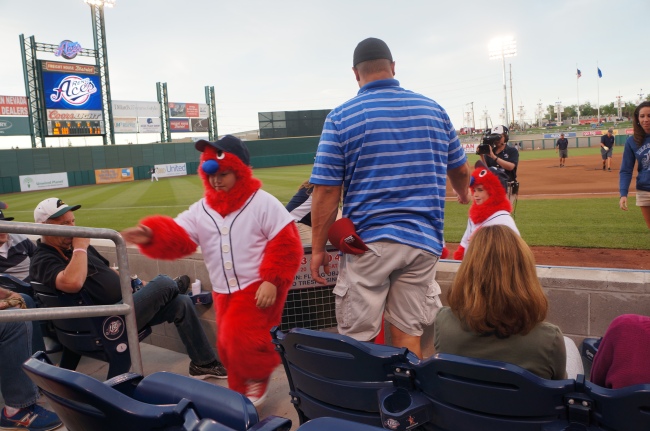
2. I’m Dubious
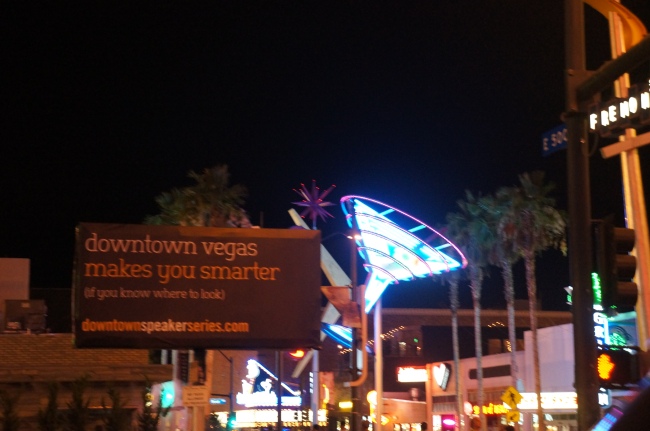
3. Even Denny’s Is Swanky in Vegas

4. McDonald’s Too
5. Endy Chavez Is Amazing (Or the Angels Need a New Jumbotron Guy)
6. Santa Barbara Is Pretty
7. Your Worst Inhibitions Tend to Psych You Out in the End
8. Carolina League All Stars Pregame (Rangers Prospects in Blue)
9. Cal League All Stars Pregame (Plus Gigante, the SJ Giants Mascot)
10. Howdy Pardner
So there you have it. My west coast trip in a series of nutshells. More soon!
__________________
^Not the actual name. I don’t remember if it had an actual name. Just read, you’ll see what I mean
^^OHHHH, BURN!!!!
Second List of Ten
Since the point of this blog is to demonstrate that I’m learning how to scout, I thought an appropriate list would be ten things I learned about scouting. So I wrote it. And now you’re reading it. Well, now you’re reading about why I wrote it, and pretty soon you’ll be reading it. Like now:
- Between the two Low-A leagues, the Carolina League might be a LOT better than the California League. Sample size caveats, obviously, but in the past two years, they have won the All Star Game by a combined score of 21-3. This will require much more research, and will probably be the subject of a blog post sometime later.
- It’s exhausting. Driving around, watching mediocre baseball just to see one kid hit maybe four times, eating ballpark food every night, and getting paid peanuts to do it. Not an easy lifestyle.
- The biggest difference between Low-A pitchers and MLB pitchers is command. Low-A pitchers routinely throw mid-90s fastballs, mid-80s changeups, and high-70s breaking balls. They just don’t know where it’s going when they throw it. Movement and deception also make a small difference, but command is by far the most important skill that prospects have to learn before they are ready to advance.
- One game is really not enough to get a strong opinion about a player. If I feel like I have time, I may start trying to extend my stay in certain cities to try to get a more complete look at some of these kids. In one summer though, it may just not be possible to be as thorough as I’d like.
- You get some weird looks if you demonstrate any kind of enthusiasm from the scout section, just as you do in the press box. You’re at work, just sit there and watch.
- Minor League All Stars are rarely the best prospects in their respective leagues. They pick the best statistical performers, and a guy who’s 27 and still in Low-A has a pretty huge advantage over a guy who’s 19, even if the 19-year-old is the better prospect. Also, I think they feel like the big prospects have better things coming, and it’s nice to honor the guys for whom this really is one of their career highlights.
- Minor league parks don’t open the gates until batting practice is over. It makes sense in retrospect. There are no outfield bleachers, so you can’t catch home run balls, and the attendance would be so sparse that it would be a huge waste to pay staffers to be there an extra hour early.
- Power hitters tend to hold their bats more perpendicular to the ground, while contact hitters hold their bats more parallel. The higher the bat, the more acceleration time the bat has as it comes around and drops into the zone, generating more power, but making it more difficult to be consistent.
- Walks, while an important part of the developmental profile of a hitter, are really frustrating to watch. As a scout, you’re already limited to maybe four or five swings, and walks cut into that even further.
- Don’t blind yourself to the other players on the field just because you came to see one guy. I saw a non-prospect shortstop make two incredible diving plays. I barely paid attention because I was disappointed that the third baseman wasn’t making the play, but special plays like that are worth noticing, for two reasons. First, I appreciate good baseball. And second, even if he’ll never be a star, he may have a future as a defense-first bench player someday. The most successful teams are usually the ones with the best benches. Every player has value; it is the scout’s job to accurately evaluate what that value is.
I apologize if some of you are reading this for the second time. I wrote a really long post yesterday, and decided to spread it across multiple posts, but I think it went out via email as one big post before I chopped it apart.
First List of Ten
The first leg of my trip is complete. I logged over 2,000 miles in my rental car in California and Nevada, I saw eight games, from Low-A up to the Majors, and have now seen 12* of the 100 prospects I’m hunting down this summer. Lists are awesome, right? In honor of the progress I’ve made on Baseball America’s list, I’m going to make a few lists of my own, reflecting on my time on the West Coast. I don’t think I can write 100 items per list (nor would you want to read that many), so I’m just going to do several lists of 10.** Without further ado, here’s the first one!
List 1: Ten things I learned about road-tripping
- A seven-hour drive by yourself is a great chance to work on the range-expanding-but-super-annoying vocal exercises that my roommate taught me.
- If you have four choices of car, don’t pick randomly, figure out which has the best mileage.
- Charging your phone in the car is inexplicably WAY faster than charging it in the wall. Seriously.
- There are no gas stations or cell towers in the desert. Fill up early.***
- Los Angeles is HUGE. It takes two hours to drive across it when traffic is good. When it’s bad, may God have mercy on your soul.
- Apple Maps is really optimistic about how quickly you can get places.
- Most motels provide free wifi, free cable…and no shampoo.
- Always bring a Red Bull (or coffee, whatever gets it done for you). Even when you’re rested, being stationary for that long makes you drowsy.
- Motels will begin trying to kick you out at least an hour before the official checkout time, but if you put up the “Do Not Disturb” sign, you might as well be in a different dimension.
- It is impossible to get a motel room after 10:00 pm if you are within fifteen miles of a major airport.
There will be more lists to come in the next few days as I continue to recuperate before heading back out on the road on Monday.
____________________
*This is counting the four I had seen prior to starting the blog
**Any resemblance to real columns such as Matthew Berry’s Ten Lists of Ten fantasy football column or fantasy baseball column is purely a coincidence
***I didn’t run out of gas, but I did go beyond what the “Miles Until Empty” meter said was possible









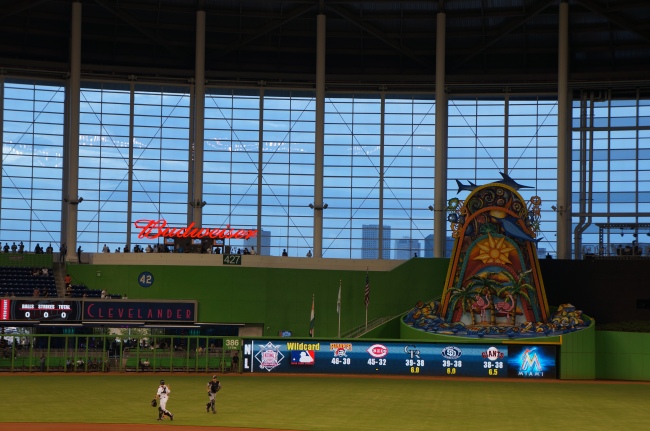


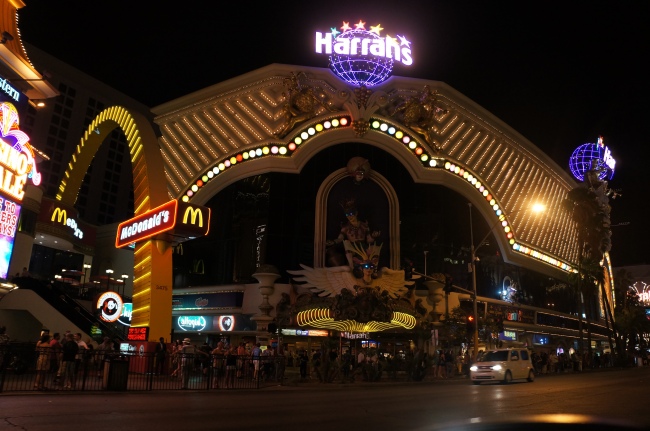
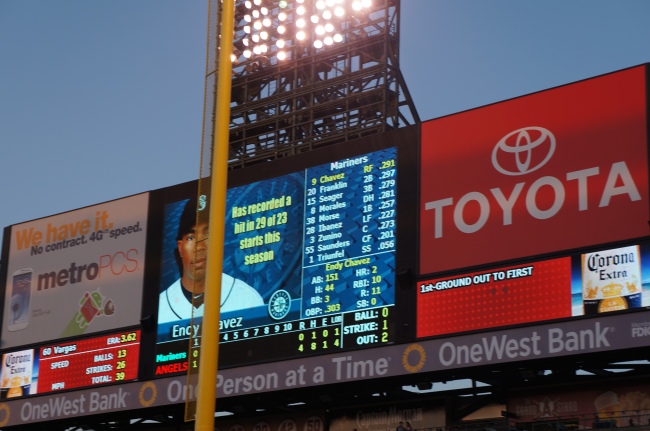


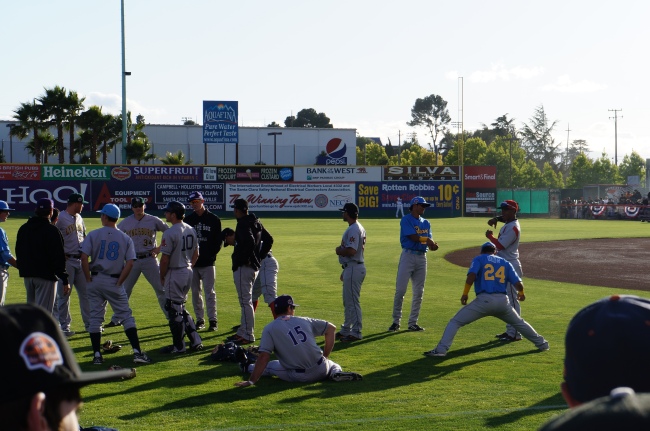
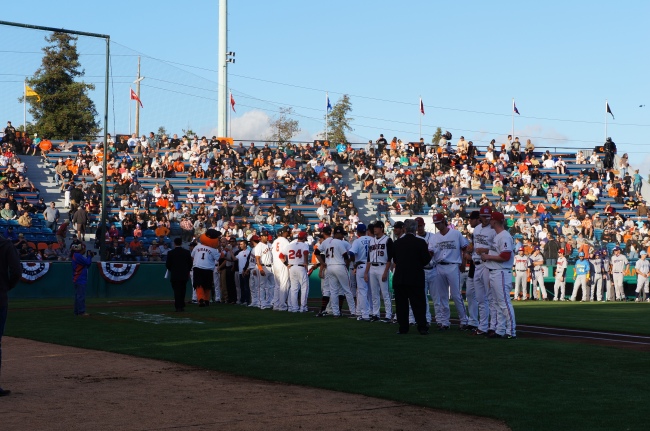

Recent Comments